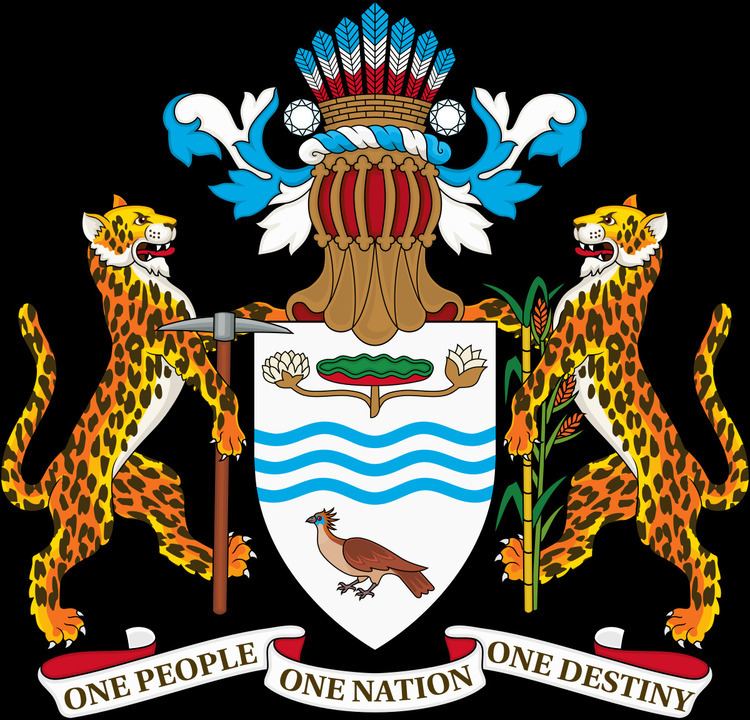 | ||
After independence in 1966, Guyana sought an influential role in international affairs, particularly among Third World and non-aligned nations. It served twice on the UN Security Council (1975–76 and 1982–83). Former Vice President, Deputy Prime Minister, and Attorney General Mohamed Shahabuddeen served a 9-year term on the International Court of Justice (1987–96).
Contents
Guyana has diplomatic relations with a wide range of nations, and these managed primarily through its Ministry of Foreign Affairs. The European Union (EU), the Inter-American Development Bank (IDB), the UN Development Programme (UNDP), the World Health Organization (WHO), and the Organization of American States (OAS) have offices in Georgetown.
Guyana strongly supports the concept of regional integration. It played an important role in the founding of the Caribbean Community and Common Market (CARICOM), but its status as the organization's poorest member limits its ability to exert leadership in regional activities. Guyana has sought to keep foreign policy in close alignment with the consensus of CARICOM members, especially in voting in the UN, OAS, and other international organizations. In 1993, Guyana ratified the 1988 Vienna Convention on illicit traffic in narcotic drugs and cooperates with U.S. law enforcement agencies on counter-narcotics efforts.
Two neighbours have longstanding territorial disputes with Guyana. Since the 19th century, Venezuela has claimed all of Guyana west of the Essequibo River — 62% of Guyana's territory. At a meeting in Geneva in 1966, the two countries agreed to receive recommendations from a representative of the UN Secretary General on ways to settle the dispute peacefully. Diplomatic contacts between the two countries and the Secretary General's representative continue. Neighbouring Suriname also claims the territory east of Guyana's New River, a largely uninhabited area of some 15,000 square kilometres (5,800 sq mi) in southeast Guyana. Guyana and Suriname also disputed their offshore maritime boundaries. This dispute flared up in June 2000 in response to an effort by a Canadian company to drill for oil under a Guyanese concession. Guyana regards its legal title to all of its territory as sound. However, the dispute with Suriname was arbitrated by the United Nations Convention on Law of the Sea and a ruling in favor of Guyana was announced in September, 2007.
Guyana is also a member of the International Criminal Court with a Bilateral Immunity Agreement of protection for the US-military (as covered under Article 98).
Disputes - international
All of the area west of the Essequibo River claimed by Venezuela; Suriname claims area east of the New Upper Courantyne.
Illicit drugs
Transshipment point for narcotics from South America - primarily Venezuela - to Europe and the United States; producer of cannabis.
